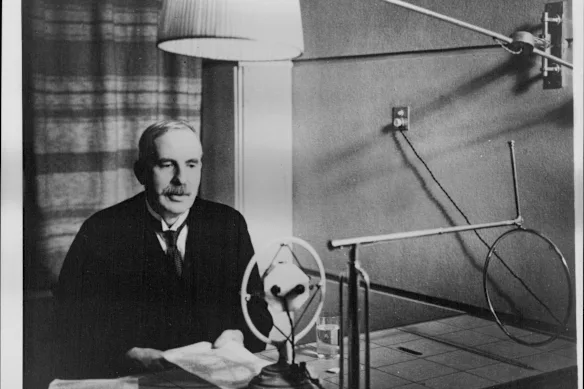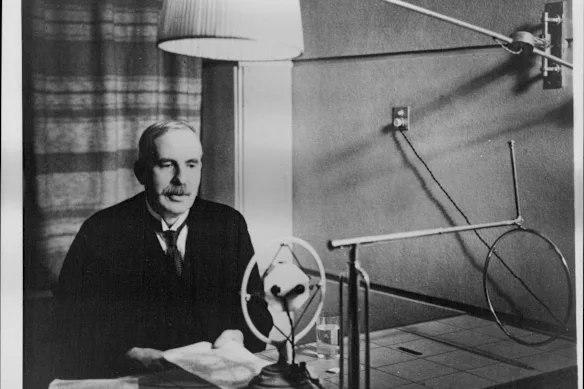BIOGRAPHY
Ernest Rutherford and the Birth of Modern Physics
Matthew Wright
Scribe, $36.99
Every schoolkid has seen a diagram of the atom: a packed nucleus of protons and neutrons, with tiny electrons whizzing around it like planets in a minuscule solar system.
In essence, this is still how physicists see atoms today, though the models they work with are a lot more complicated, involving mysterious nuclear forces, a subatomic zoo of particles and weird quantum considerations that we didn’t have to know about in high school, and most of us never have to think about at all.
The infinitesimal solar system is indeed an oversimplification of what really goes on inside the atom, but it’s still a useful metaphor for the building blocks of matter. It’s one we’re all familiar with from corporate logos, comic books and, yes, high school texts.
But as recently as a century ago, nuclear physics was in its infancy, and the structure of the atom was still a matter of heated debate. In Ernest Rutherford and the Birth of Modern Physics, biographer Matthew Wright illuminates the astonishing career of perhaps the greatest hands-on scientist to live and work through the iconoclastic revolution that gave rise to the nuclear age, from the 1890s through to the late 1930s.
Rutherford, New Zealand’s first national hero (well, non-Maori hero), was born in 1871 in the tiny town of Spring Grove in the South Island, and won the Nobel Prize for physics in 1908. Edmund Hillary would later climb impossible mountains, and Richie McCaw take the All Blacks to even greater heights, but Rutherford, with a Nobel, a knighthood, and then as Lord Nelson, was the most famous and respected Kiwi of his day.

Ernest Rutherford delivers a lecture in New Zealand in 1926.Credit: Cawthron Institute
Wright (a Kiwi himself) manages the deft balancing act of telling the life story of a pioneering physicist while explaining the science in a comprehensible way, and in Rutherford’s case this is a far greater challenge than writing the biography of a mountain climber or a rugby wizard.
In a sense, this is not a comprehensive or deeply personal biography, though it is impeccably researched and gives insight into Rutherford’s driven personality and insatiable appetite for hard work. It is more, as the subtitle suggests, a guided tour of the warring theories and intellectual uproar that was the world of physics either side of World War I. Wright cleverly “boxes out” some of the technical stuff for readers who want to dig a little deeper (if you want to know more about Michael Faraday and electromagnetic induction, page 68 has a concise self-contained summary), without bogging down the narrative.
Images are for reference only.Images and contents gathered automatic from google or 3rd party sources.All rights on the images and contents are with their legal original owners.
